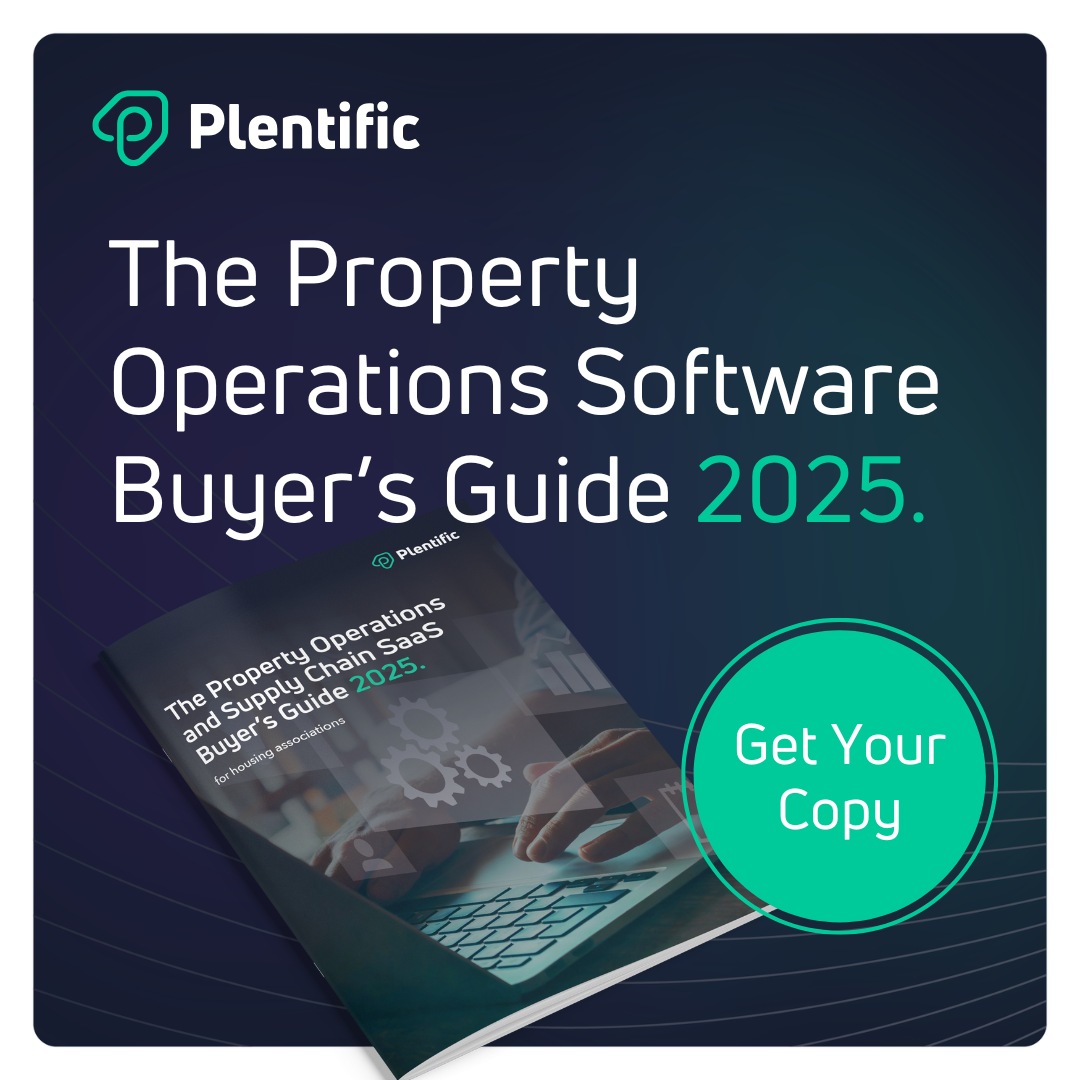Choosing the right property operations (PO) software is a critical decision for housing providers, one that will shape their cost-effectiveness, compliance security, and resident satisfaction. Given that many professionals will only go through this procurement process once in their careers, it’s essential to approach it with clarity and a well-structured evaluation framework. The right software should centralise core operational functions, ensuring better coordination, control, and service delivery – without requiring a greater workforce to make it happen. But with so many options available, what should housing providers – especially in niche segments like social, student and retirement housing - be looking for? Here’s a breakdown of the essential capabilities to prioritise.
1. Data Access Control and Security
Property management involves handling vast amounts of sensitive data, from tenant records to financial transactions. The software you choose must have robust role-based access controls, allowing administrators to assign permissions based on staff responsibilities. This ensures that only authorised personnel can access specific information, reducing security risks and maintaining compliance with data protection regulations. Additionally, enhanced security measures such as encryption and audit trails help protect tenant information and reinforce trust.
2. Ensuring Compliance and Transparency
Regulatory compliance is non-negotiable in housing management, and a modern PO system should act as a central hub for tracking and managing compliance obligations. The best platforms offer built-in compliance trackers, allowing providers to monitor building safety, inspections, and statutory requirements across their entire portfolio. Visual documentation features, such as secure storage for inspection photos and videos, provide transparency for stakeholders and reduce ambiguity when reporting to regulators. A strong compliance function also means the system can be tailored to accommodate evolving regulations, helping providers stay ahead of legislative changes with minimal disruption.
3. Improving Inspection Management
Property inspections are an integral part of operational efficiency, but they can quickly become a logistical burden without the right tools. A software platform that automates scheduling and integrates with calendars can significantly reduce manual effort while ensuring inspections are carried out on time. Beyond scheduling, real-time progress tracking and digital documentation allow teams to report issues instantly, and should enable the upload of photos and notes while at the property. This level of visibility not only improves record-keeping but also speeds up decision-making and follow-up actions.
4. Enhancing Resident Communication and Engagement
Clear and responsive communication is key to maintaining resident satisfaction and trust. A good PO system should support multi-channel communication, allowing providers to send updates via email, SMS, or in-app notifications - all within one cohesive platform. But communication shouldn’t only be one-sided; the ability to collect resident feedback is just as important. Platforms with built-in survey tools or rating systems enable housing providers to measure service effectiveness and address concerns proactively. Some systems even offer community-building features that nurtures stronger relationships among residents through forums or digital notice boards – all of which contributes to a more connected living environment.
5. Managing Repairs and Maintenance with Precision
A well-functioning repair and maintenance system can make the difference between a satisfied resident and a complaint waiting to happen. Modern software should provide a centralised platform where all repair requests, work orders, and contractor assignments can be managed seamlessly. A resident self-service portal is a game-changer, allowing tenants to report issues 24/7, track progress, and even provide feedback once the job is completed. The best platforms incorporate automation to assign work orders efficiently, ensuring that tasks are allocated based on urgency, location, and contractor availability. Real-time cost tracking features also help providers manage budgets effectively, preventing overspending and ensuring accountability among service providers.
6. Reducing Voids and Vacancy Times
Managing void properties efficiently is critical to minimising financial losses. The right software will automate vital tasks such as scheduling pre-void inspections, tracking necessary repairs, and coordinating re-lettings. Centralising data on one platform ensures that void properties don’t become administrative headaches, providing real-time insights into preparation progress and reducing the turnaround time between tenants. Standardised workflows, whether built-in or customisable, ensure that every void property follows a consistent process, reducing delays and errors.
7. Embracing Planned and Predictive Maintenance
Prevention is always better than cure when it comes to property maintenance. A sophisticated PO system should go beyond reactive repairs, offering data-driven insights that enable predictive maintenance. By analysing repair histories, sensor data, and asset conditions, the software can help providers to anticipate issues before they escalate into costly failures. Automated alerts flag potential maintenance risks, while scheduling tools ensure that essential cyclical tasks, such as gas safety checks and boiler servicing, are never overlooked. This proactive approach not only extends the lifespan of assets but also reduces emergency repair costs in the long run.
8. Managing Complex Projects with Confidence
For housing providers dealing with large-scale projects - whether it’s disrepair cases, damp and mould management, or capital investment initiatives - having a PO system with strong project management capabilities is crucial. The software should enable centralised planning, tracking, and coordination, giving teams real-time oversight of project timelines, budgets, and resource allocation. Compliance tracking is also essential, ensuring that work is completed within regulatory deadlines, thus avoiding potential fines. A well-structured project management function allows providers to deliver high-priority initiatives more efficiently and with greater accountability.
9. Leveraging Data for Smarter Decision-Making
Data is one of the most powerful tools for modern housing providers, but its value depends on how well it’s managed. A strong PO system consolidates all property-related data - from repair histories to financial records - into a single source of truth. This eliminates data silos and ensures that teams across different departments have access to accurate, up-to-date information. Automated data capture reduces manual errors, while customisable reporting tools allow providers to track key performance indicators, monitor trends, and generate actionable insights. Compliance reporting features further ease administrative burdens, ensuring providers meet regulatory requirements with minimal effort.
Making the Right Choice
Selecting a new property operations platform is a rare but highly significant decision for any housing provider. The system you choose should not just meet immediate needs but also provide the flexibility to adapt as challenges evolve. By focusing on core capabilities - inspections, compliance, data security, resident engagement, maintenance, voids, project management, and performance insights - you can ensure that your investment delivers long-term operational value.
For a more detailed breakdown of these essential capabilities and a structured approach to evaluating PO software, download Plentific’s Property Operations Buyers’ Guide today. It’s your essential resource for navigating this critical procurement process with confidence.


